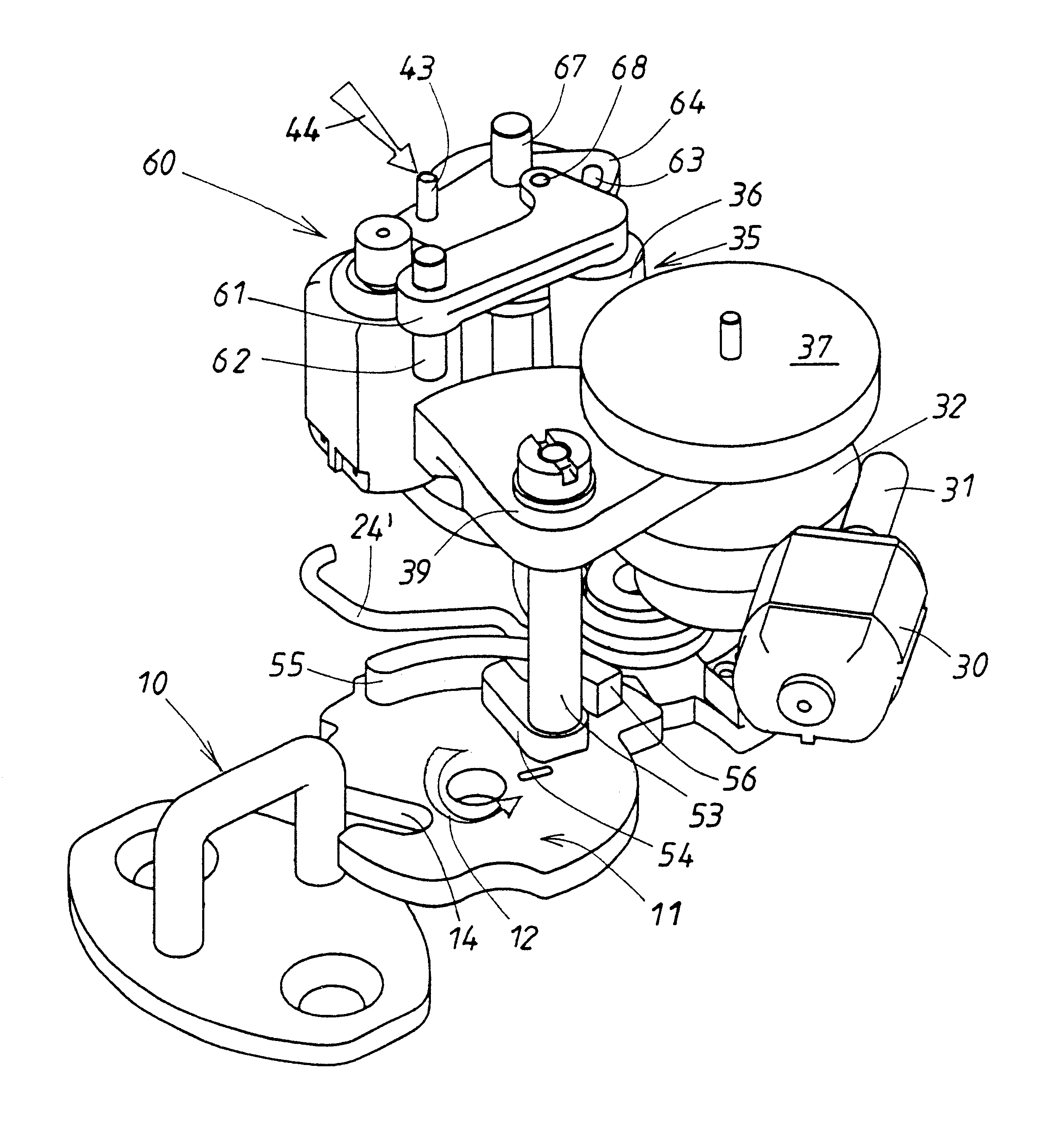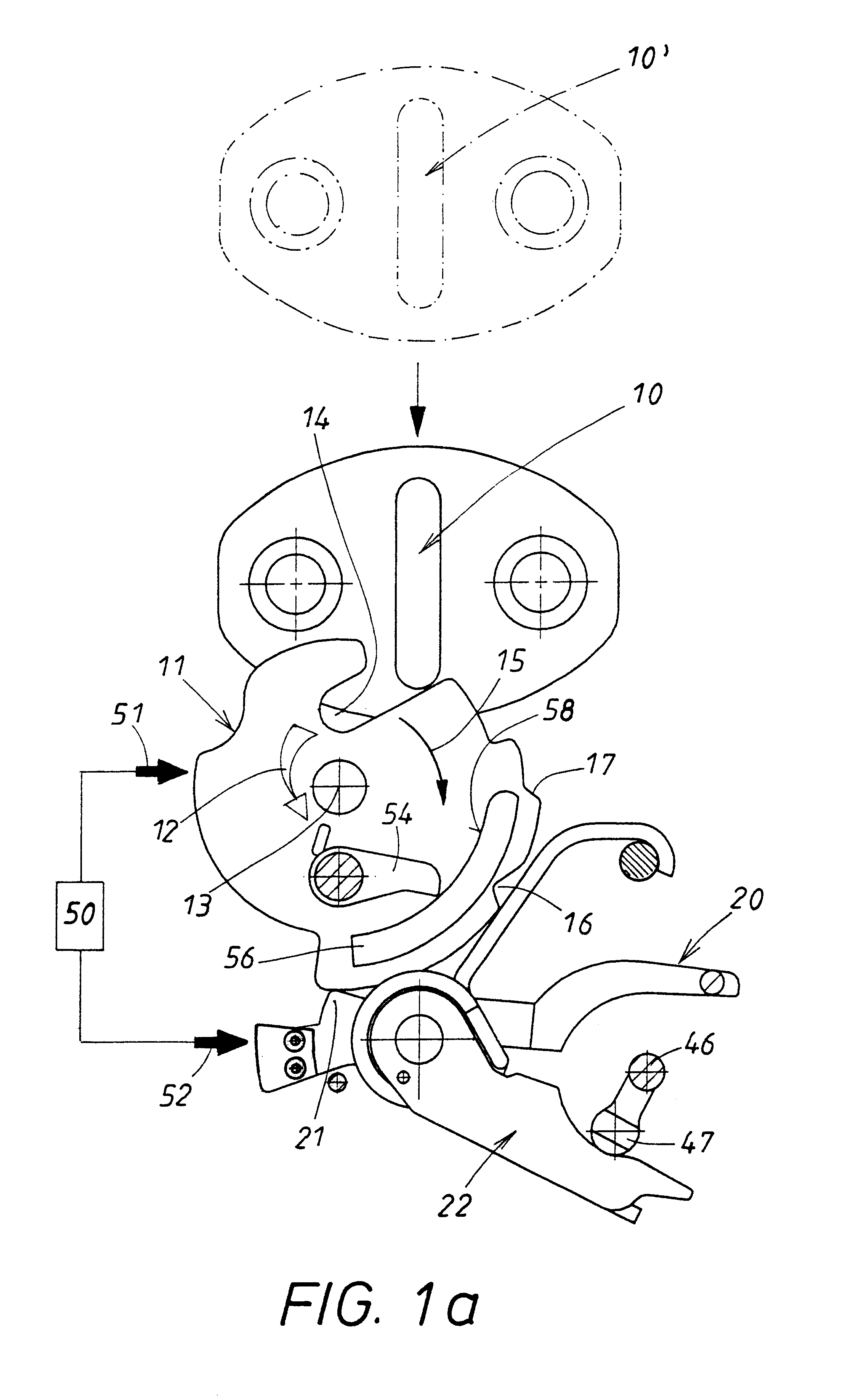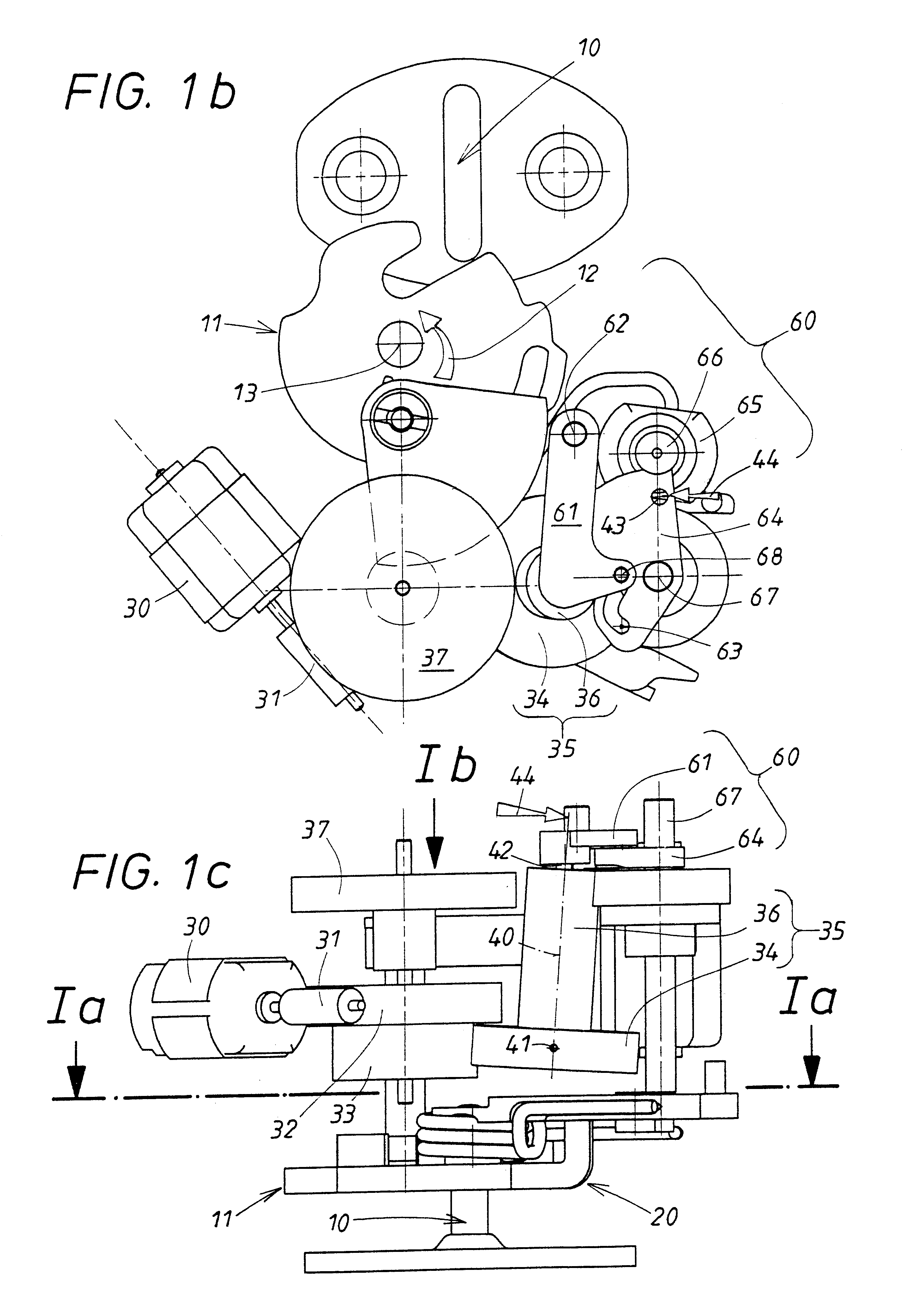Door lock with roller catch, especially for motor vehicles
a technology of roller catch and door lock, which is applied in the field of door locks, can solve the problems of high requirements for sensors, difficult and expensive manufacture of sensors with such high requirements, and the movement of roller catch back and forth
- Summary
- Abstract
- Description
- Claims
- Application Information
AI Technical Summary
Benefits of technology
Problems solved by technology
Method used
Image
Examples
Embodiment Construction
The configuration of the lock is explained in more detail with the aid of FIGS. 1a to 1d. The door lock comprises a roller catch 11 which is subjected to a restoring force, illustrated by the force arrow 12, of a spring, not shown in detail. The roller catch 11 is pivotably supported on a bearing pin 15 in a housing, not shown in detail, and is usually fastened on the door, not shown in detail. Instead of a side door, another type of door, for example, the rear hatch of a motor vehicle, could be concerned. The roller catch 11 comprises a slot-shaped receiving device 14 for a locking part 10 which is bracket-shaped in this embodiment. When the locking part is removed from the roller catch 11, as illustrated at 10' in FIG. 1a, it is maintained by its spring-load 12 and rotary stops, not illustrated in detail, in an open position illustrated in FIG. 1a. In this connection, the roller catch 11 with its receiving device 14 remains accessible from the exterior. The locking part 10 is usua...
PUM
 Login to View More
Login to View More Abstract
Description
Claims
Application Information
 Login to View More
Login to View More - R&D
- Intellectual Property
- Life Sciences
- Materials
- Tech Scout
- Unparalleled Data Quality
- Higher Quality Content
- 60% Fewer Hallucinations
Browse by: Latest US Patents, China's latest patents, Technical Efficacy Thesaurus, Application Domain, Technology Topic, Popular Technical Reports.
© 2025 PatSnap. All rights reserved.Legal|Privacy policy|Modern Slavery Act Transparency Statement|Sitemap|About US| Contact US: help@patsnap.com



